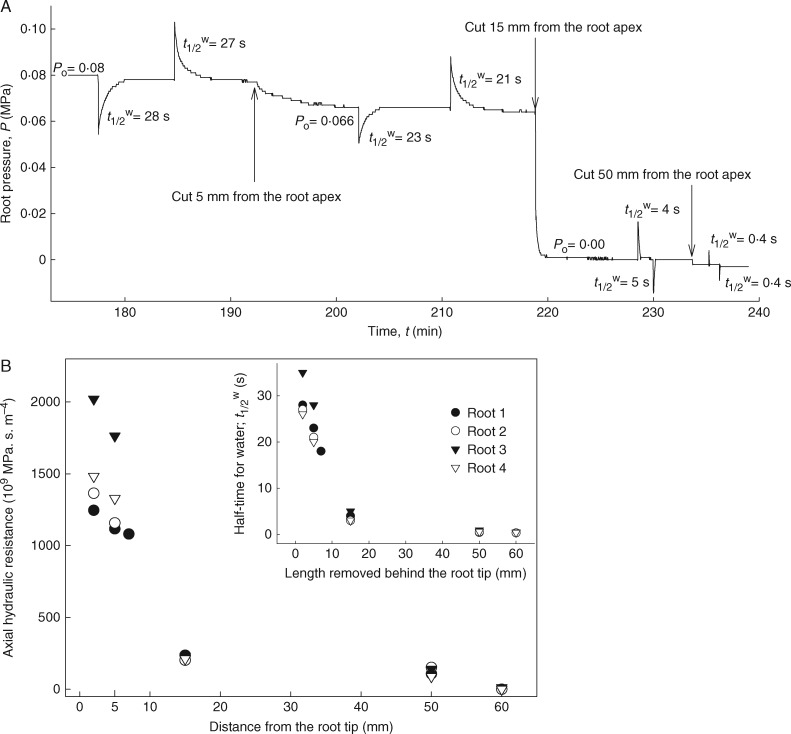Fig. 5.
Cutting experiment on an excised maize root attached to the root pressure probe. When the root was successively cut with a razor blade, starting at the apex, the root pressure dropped immediately when developed xylem was cut. Between cuts, hydrostatic pressure relaxations were performed in order to measure changes in the hydraulic resistance of the root. The cutting experiments also allowed the longitudinal hydraulic resistance in the root to be estimated and provided information about the tightness of the silicone seal. In the pressure probe measurement, it is assumed that the radial resistance is significantly greater than the axial resistance to overall water flow in roots. The cutting experiment demonstrated that this is true. When the root apical end of a 5 mm long segment (including the root tip) was removed, the root pressure (Pr) and the t1/2w dropped by 20 % (A), indicating that some early metaxylem vessels are partially matured and semi-conductive at this distance from the tip. However, as soon as the fully matured and functional early metaxylem vessels (starts at approx. 15 mm from the apex) were cut, the Pr immediately dropped to zero and the t1/2w decreased by 6- to 7-fold due to leaking out of the open xylem vessels. A further cut at 50 mm from the apex, where the central late metaxylem vessel (central duct) is conductive, resulted in decreasing the t1/2w to zero. There is a direct and positive correlation between the t1/2w and the axial hydraulic resistance of the root (xylem vessels) (B). The experimental data proved that the measured t1/2w and Lpr refer to the radial transport of water into the roots (from the external medium to the root xylem) but not to the axial transport along the root xylem vessels.

